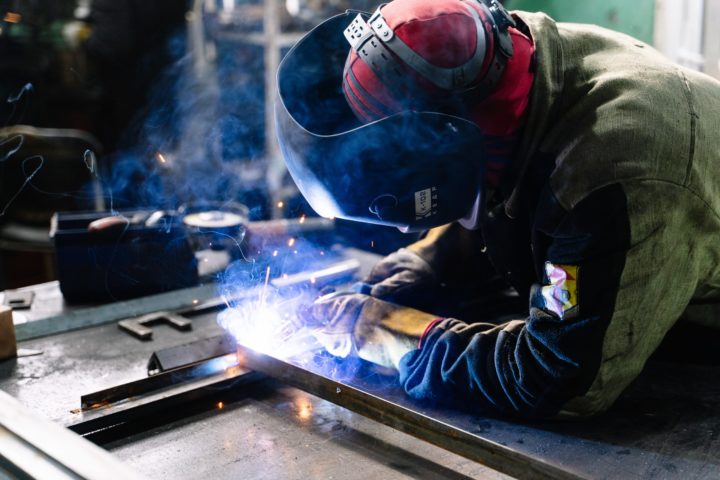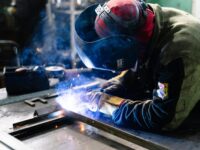The following contribution is from another author.
Welding is one of the effective ways of joining thermoplastics and metals together. It involves melting two pieces of metal or thermoplastics at the joining points and adding filler to create the weld pool. The joint solidifies, creating a sturdy joint that holds together the two pieces. Welding falls into five categories, depending on how the pieces are joined. These welding types are arc welding, resistance welding, solid-state welding, gas welding, and energy beam welding.
The history of welding goes back to 1750 AD when forge welding was introduced. The process involved heating two metal ends and hammering them until they created a sturdy joint. In 1886, Elihu Thomson invented resistance welding, which has advanced into modern-day welding. Through his ideas, inventors have gradually created new methods of joining metals. Recent welding inventions include inertia, friction, and laser welding, among the technologies taught in modern welding schools.
Welding Automation
Welding technology has reached the era of automation due to unprecedented improvements over the years. Automation can help an industrial metal welder meet the ever-increasing demands for fabricated products from other industries. For example, welding automation helps increase the production rate and enhance accuracy and precision during welding. Precision and speed are critical for marine, automotive, and transport industries. Some industries have started using welding robots, which enhance the welding process’s speed, accuracy, and outcome. They also reduce the risk of injuries and dangers associated with welding. However, welding robots are expensive and require significant investments.
Laser Welding
Some fabrication processes require high welding speed, tiny seams, and low thermal distortion. Laser technology comes in handy for such applications because it is actually a non-contact process. The laser is a concentrated energy source that makes the material melt quickly. Laser welding achieves three types of welds: conduction, keyhole, and conduction-penetration. Welding professionals can use laser welding in open-air conditions. It works well for high-alloy metals and does not require filler metals, like other welding methods. Since it is accurate, laser welding can be used to make electronics, jewelry, and medical equipment.
Advanced Arc
This is a process of fusing two pieces of metal using an electric current, which creates a current arc between the electrode and the materials that need to be joined together. The heat melts the filler metal placed between the two pieces, which solidifies, forming a metallurgical bond. The bond ideally has the same strength as the individual metals despite having a mixture of different metals. This welding method is used to manufacture space vehicles and bicycles to join non-ferrous metals. Since the process is resistant to corrosion or cracking, it can be used for special applications, including sealing fuel canisters.
Friction Stir Welding
This innovative welding process was invented in Cambridge and works through a rotating tool traversing the weld path. The frictional force generated by the rotating shoulder of the machine joins the materials. The rotating mechanism also releases softened material, which solidifies to create a solid phase weld. Like laser technology, friction stir welding does not require filler metals and works best for aluminum and other alloys. This method offers many advantages over other methods because it creates the final products with minimal distortion, is energy efficient, and does not produce radiation and welding fumes.
As highlighted, welding technology has come a long way. Innovators have also played a critical role in overcoming welding challenges and achieving outstanding results. With these new welding technologies, there are no limits to what fabricators can achieve.

















This was a fascinating read! The evolution of welding technology over time is incredible. It’s interesting to see how innovations like laser welding and friction stir welding are revolutionizing the industry, not just in terms of efficiency and precision, but also in terms of safety. The advent of welding automation and the use of robots, albeit expensive, seem to be promising steps towards mitigating the risks associated with manual welding. As a student of Industrial Engineering, I found your insights particularly valuable. Looking forward to more such enlightening articles on advancements in fabrication technologies. Keep up the great work!
It is incredible to learn about the progress in welding technology over time. Friction stir welding caught my attention, it is energy efficient and minimizes distortion making it ideal for various applications.
Reliable Ceiling Fans Replacement Services Lakewood Ranch